FOOD SAFARI
Flavours of an epic Pan-African road trip
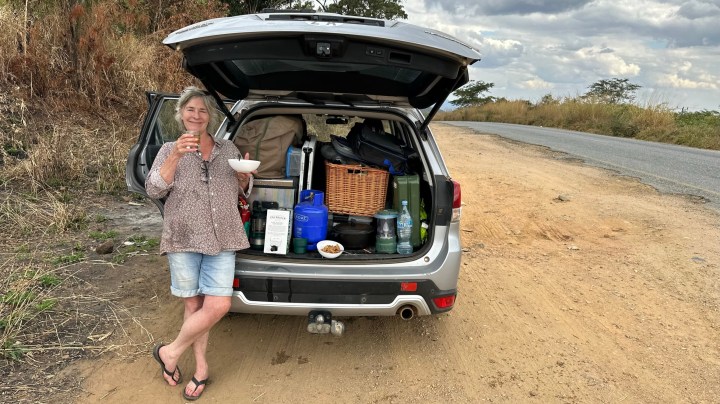
Fellow travel foodie Hugh Fraser and I recently drove to Rwanda and back. It was an epic 10,000km, 40-day trip in which we ate, drank, foraged and cooked our way through Botswana, Namibia, Zimbabwe, Zambia, Tanzania, Burundi, Rwanda, Malawi and Mozambique.
We had the best starters of our whole road trip in Heaven. We had arrived in Kigali, delirious with joy and exhaustion some 5,500km and 25 days after leaving home.
“Where’s a good place to eat?” we asked at the hotel where we were staying. “I’ll book you straight into Heaven,” smiled the reception desk clerk.
Heaven was a spacious thatched restaurant in jungle-style gardens in a posh suburb in Kigali, around the corner from Rwandan President Paul Kagame’s presidential palace. And Heaven served cocktails. I had the Urwagwa Sour, thank you, a mix of vodka, local banana (urwagwa) wine, homemade lemongrass syrup and freshly pressed citrus. I also tried the banana wine separately and it was strangely good.
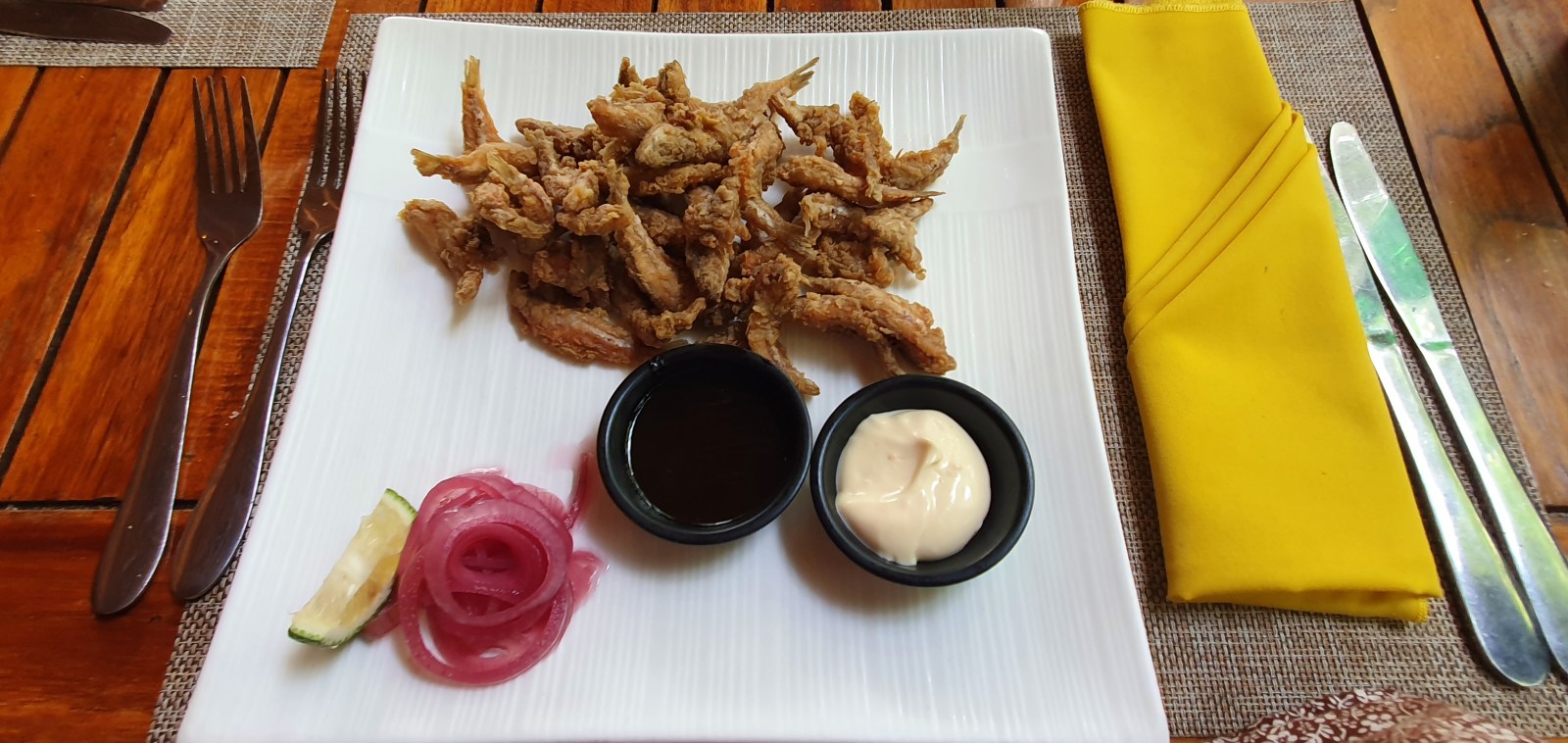
These deliciously crispy local lake sardines were served with tree tomato sauce and a spicy chilli mayo, at Heaven in Kigali, Rwanda. (Photo: Bridget Hilton-Barber)
The memorable starter was Lake Kivu Sambaza, local lake sardines, marinated in lemongrass and ginger, and deep fried with tamarind sauce. Crisp and salty, they were served with a tree tomato dip – made from the tamarillo fruit which is widely available and much used in Rwanda – and a chilli mayo dip, a sublime combination of flavours. I’ll never forget those salty little sardines.
That’s the thing about food travel, isn’t it? Culinary memory. Road trip taste snapshots.
There were many. The toasted marula nut snacks at Planet Baobab, a camp on the edge of the Makgadikgadi Pans in Botswana. Baobab trees and endless white salt plans.
We bought the first of the spicy potato samoosas at a roadside stall in Simbawunga in Tanzania after we’d crossed the border from Zambia. Everything was different, the people, the architecture, people spoke only Swahili.
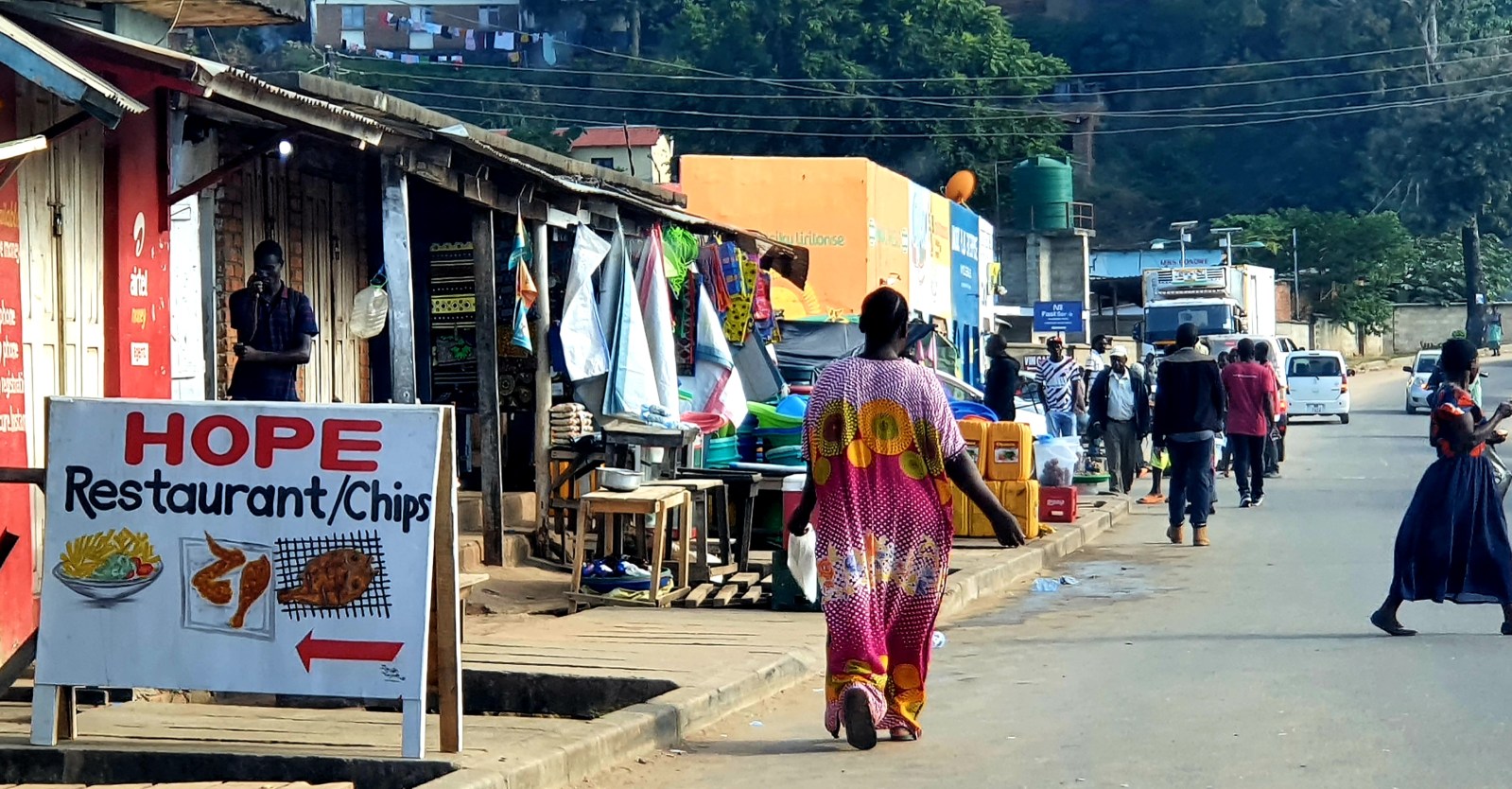
Eating local food is one of the joys of taking an epic African road trip. This was in Malawi. (Photo: Bridget Hilton-Barber)
The tuna pasta Hugh made in Livingstonia in Malawi, high up in the mountains overlooking Lake Malawi; the first slug of Zimbabwe’s very fine Gold Blend Black whisky on a chilly night in the eastern highlands of Nyanga.
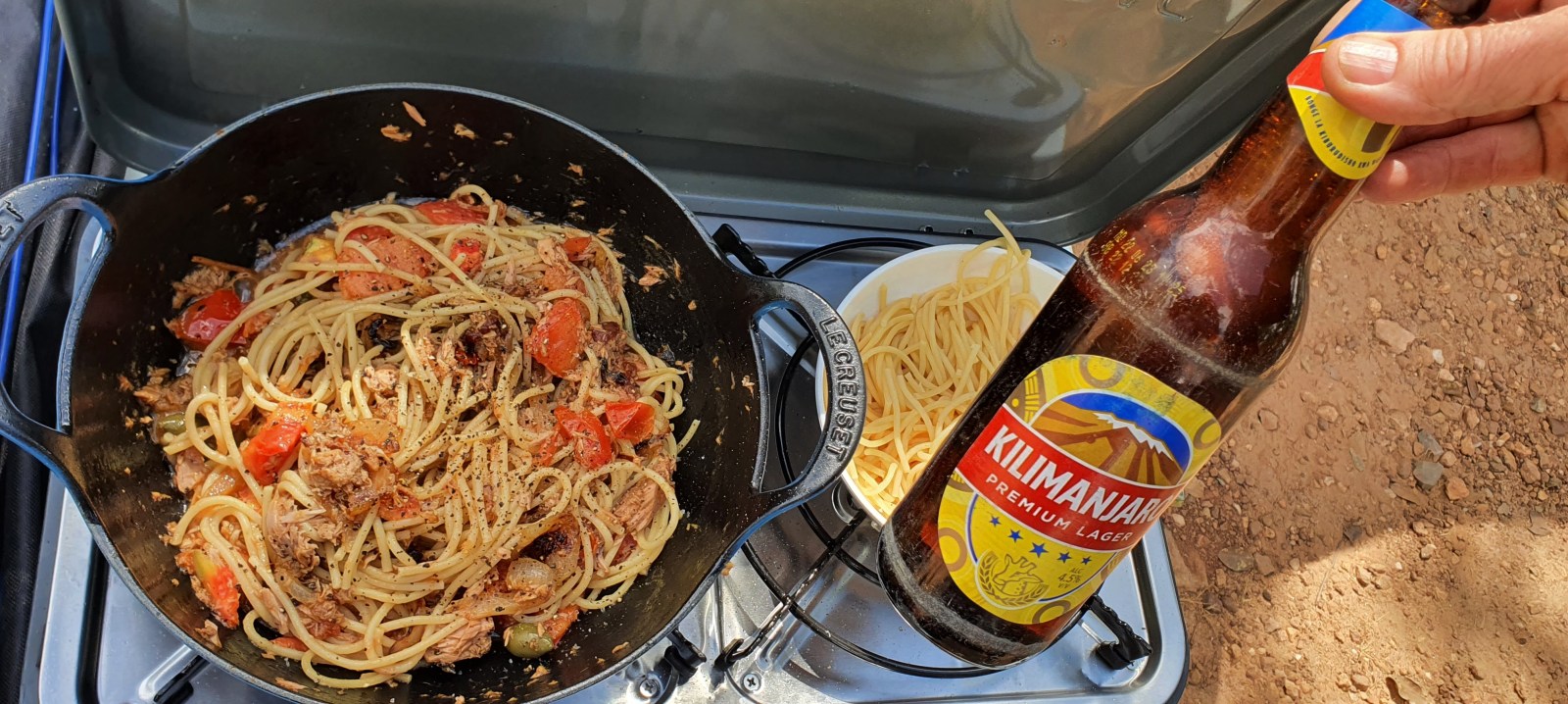
A simple delicious tuna pasta with capers and a cold Kilimanjaro beer in Malawi. (Photo: Bridget Hilton-Barber)
A most memorable meal in an extraordinary setting was when Hugh celebrated visiting his hundredth country while in Burundi. We’d had a creepy border crossing from Tanzania (grumpy border guards and a tedious car search) and a hard day’s driving through densely populated villages, with terrible roads. And then there we were at the evocative-sounding Tanganyika Blue Bay Hotel, gazing out over the second-biggest lake in the world.
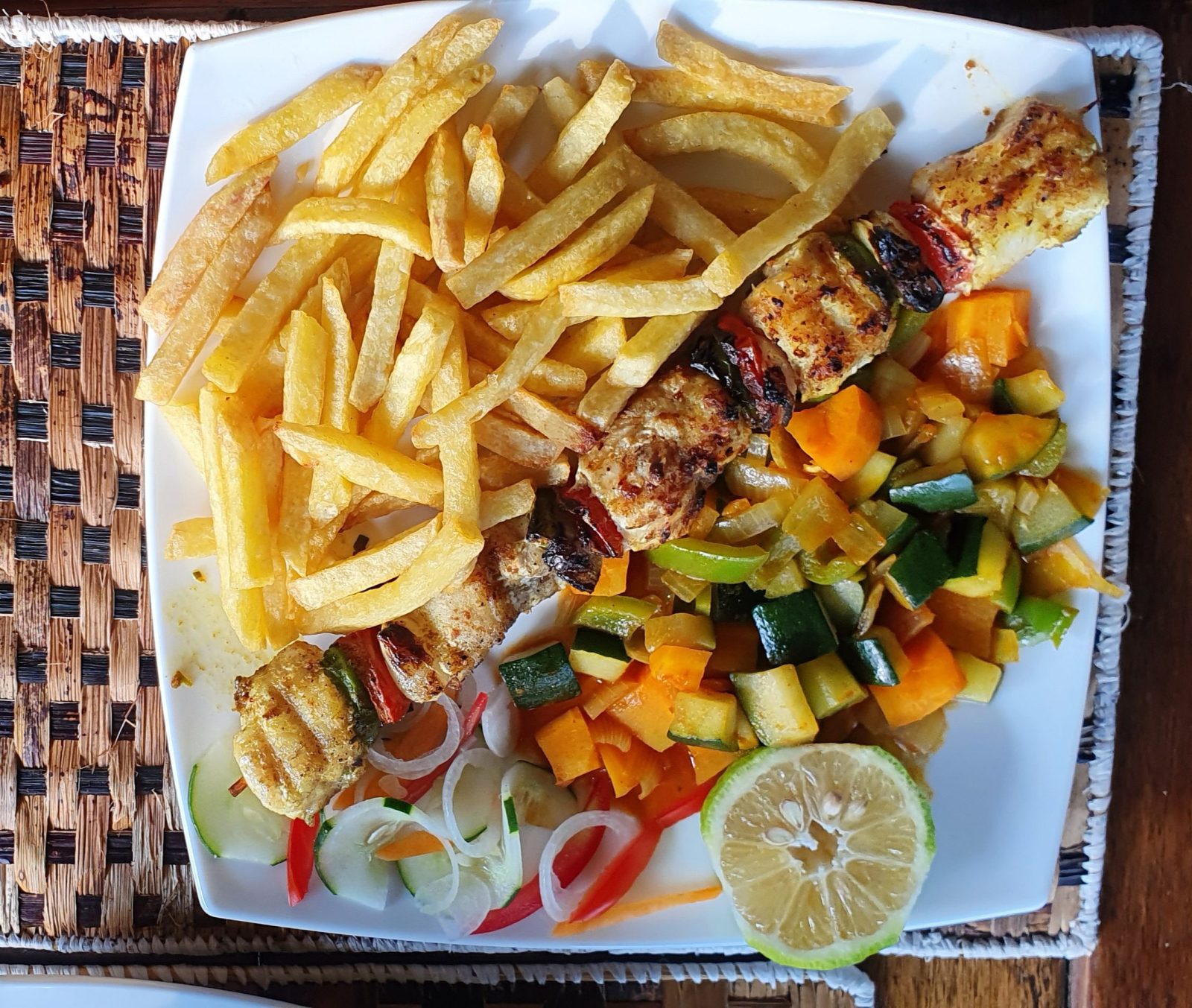
This delicious firm white fish we enjoyed in Burundi is called mukeke and is endemic to Lake Tanganyika. (Photo: Bridget Hilton-Barber)
I ate, for the first time, the endemic fish of Lake Tanganyika, which is called mukeke in Burundi and DRC, migebuka in Tanzania, where it’s dubbed the most delicious fish of Kigoma, the northernmost lake town, and bukabuka in Zambia. In English, it’s known as lates perch or sleek late. It’s a firm white fish and was perfectly grilled and skewered, served with African veg and chips, and lake views.
Hugh also celebrated with a Primus beer, the local Burundi beer, which I’d never heard about but surprisingly most beer-loving friends had. He’d already tried St Louis from Botswana, Windhoek from Namibia, Zambezi from Zimbabwe, Mosi Oa Tunya from Zambia, Kilimanjaro from Tanzania, and was still going to have a Virunga in Rwanda, a Carlsberg in Malawi and a 2M in Mozambique at sunset on the Tete River.
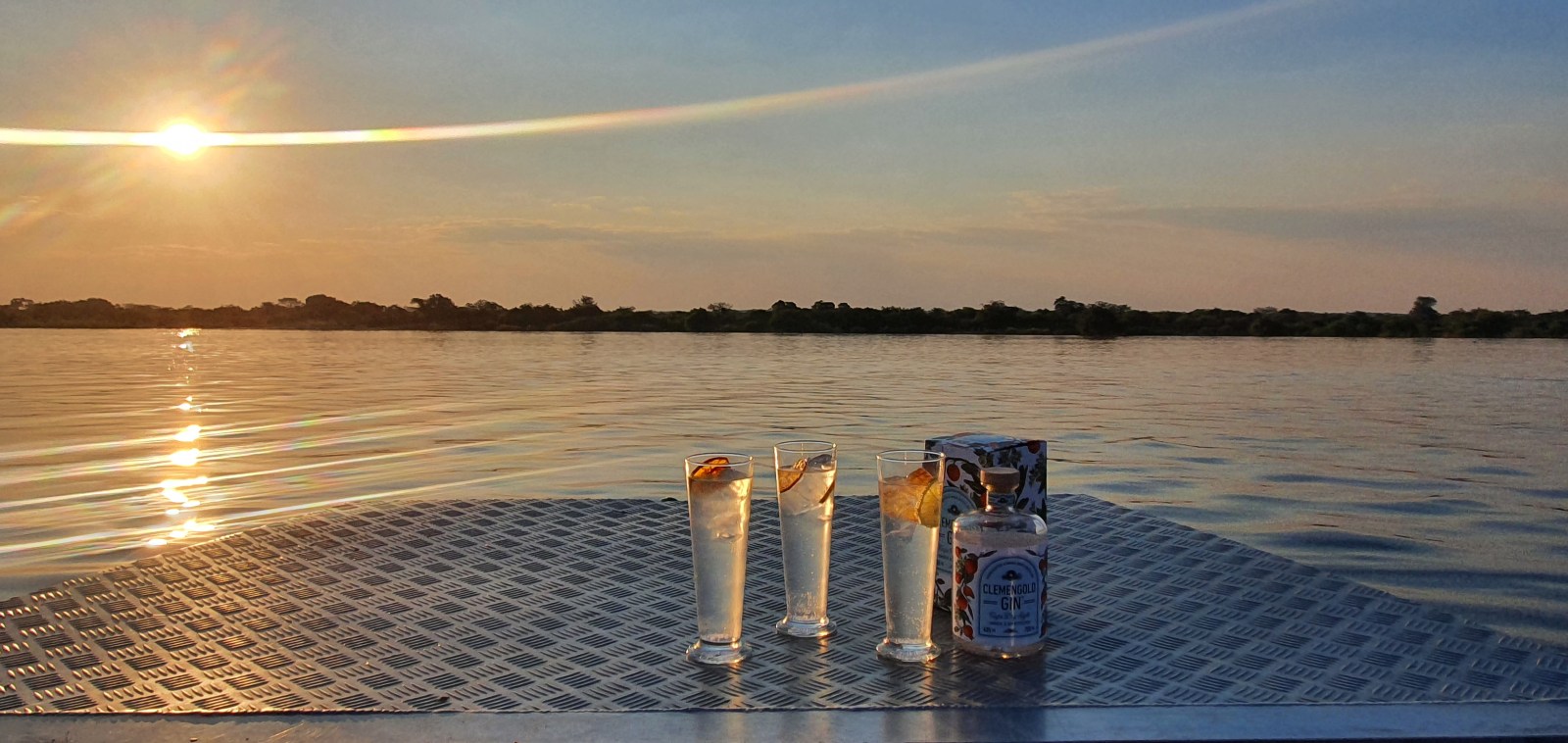
Sundowners with our sponsored Clemengold gin on the Zambezi River on the Caprivi Strip in Namibia. (Photo: Bridget Hilton-Barber)
We were also lucky enough to be partially sponsored by ClemenGold gin, which provided great relief from dusty roads and many Instagrammable sundowner moments. Even, ahem, if the bottle had to be filled with water, a few weeks into the trip.
A 10,000km road trip is not an endless Pan-African fine dining experience, however. The distances between places are long; you often don’t know what’s available ahead, and food can be seriously expensive in touristy places.
Our basic culinary strategy was to eat on a budget at the places we stayed at and visited, to do as much of our own cooking as possible, and to taste and buy local stuff as we went along.
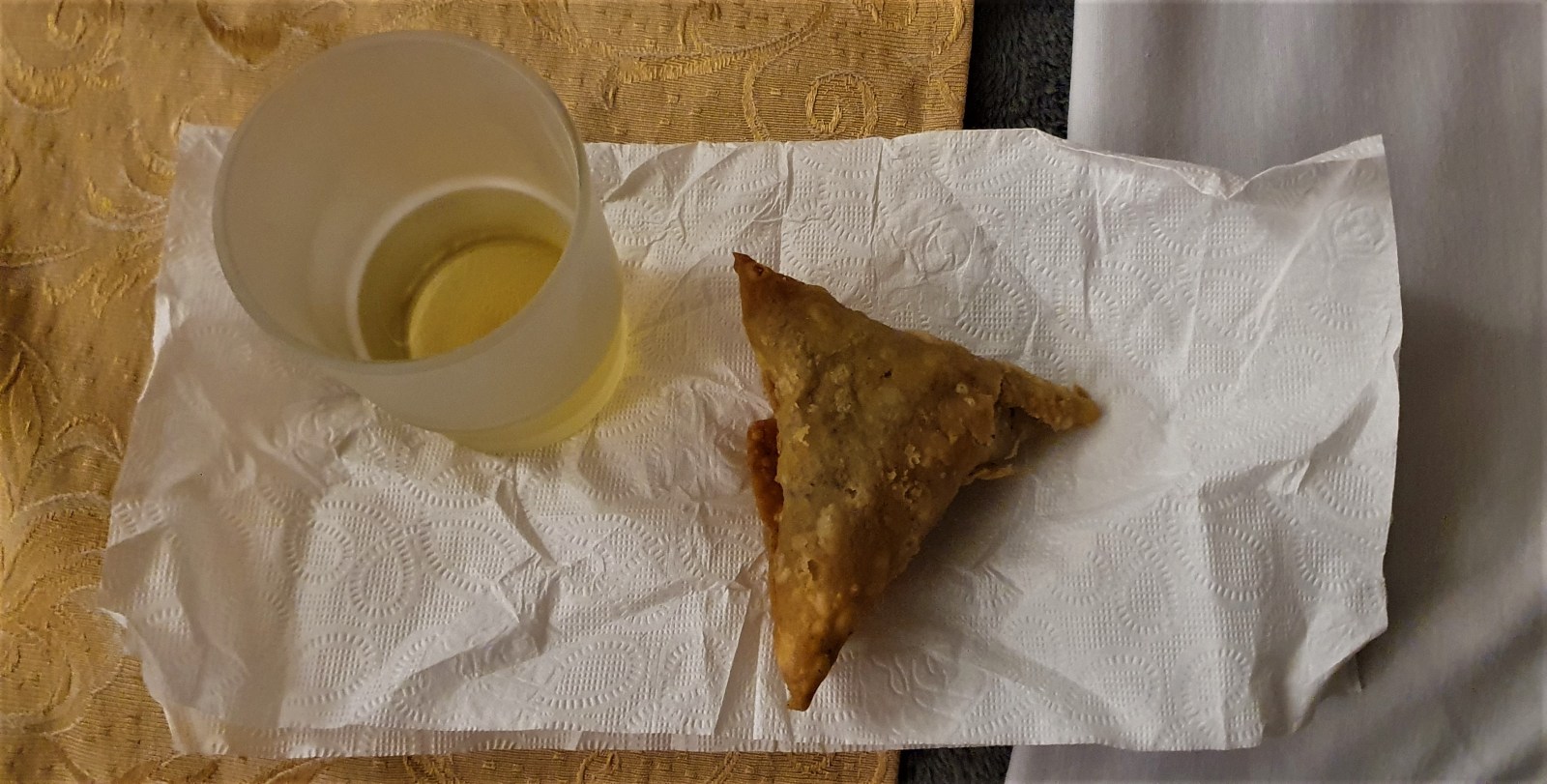
Sometimes we were so so tired all we could eat for dinner was a samoosa with a whisky. (Photo: Bridget Hilton-Barber)
To my great advantage, Hugh is a foodie and winner of Come Dine with Me (November 2021) and he produced, with a flourish, fabulous meals in the remotest of campsites. He made amazing spicy chicken with coconut milk at Kundalila Falls Campsite in central province Zambia, where we had the whole waterfall and campsite to ourselves.
But also, yes, 40 days is a very long time for which to plan menus, and there were nights when we had samoosas and whisky for supper, and mornings when we had to stop on the side of the road and heat leftovers because we were getting road-trip hangry (hungry and angry).
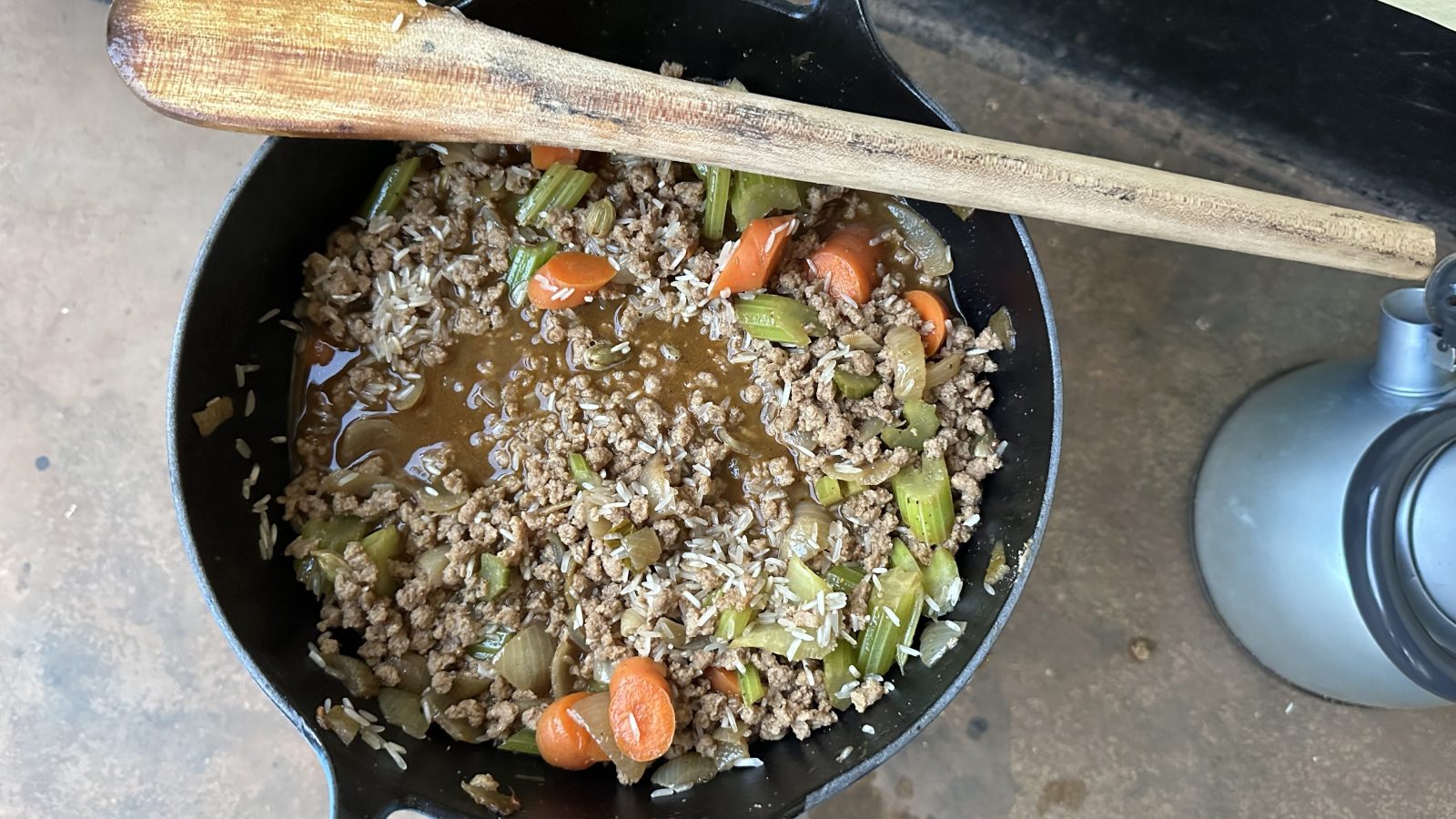
Soya mince is an asset to a camping meal if it’s done properly. (Photo: Bridget Hilton-Barber)
The secret to self-catering on a road trip is to have good gear and a crate of basics. Hugh being Hugh naturally had La Creuset pots, a Japanese kettle, a two-plate gas stove, a battery-operated coffee grinder, a plug-in car fridge and two plastic crates with an impressive variety of spices and seasonings, tinned stuff like chickpeas, whole peeled tomatoes and beans, as well as dried goods like beans, rice and soya mince.
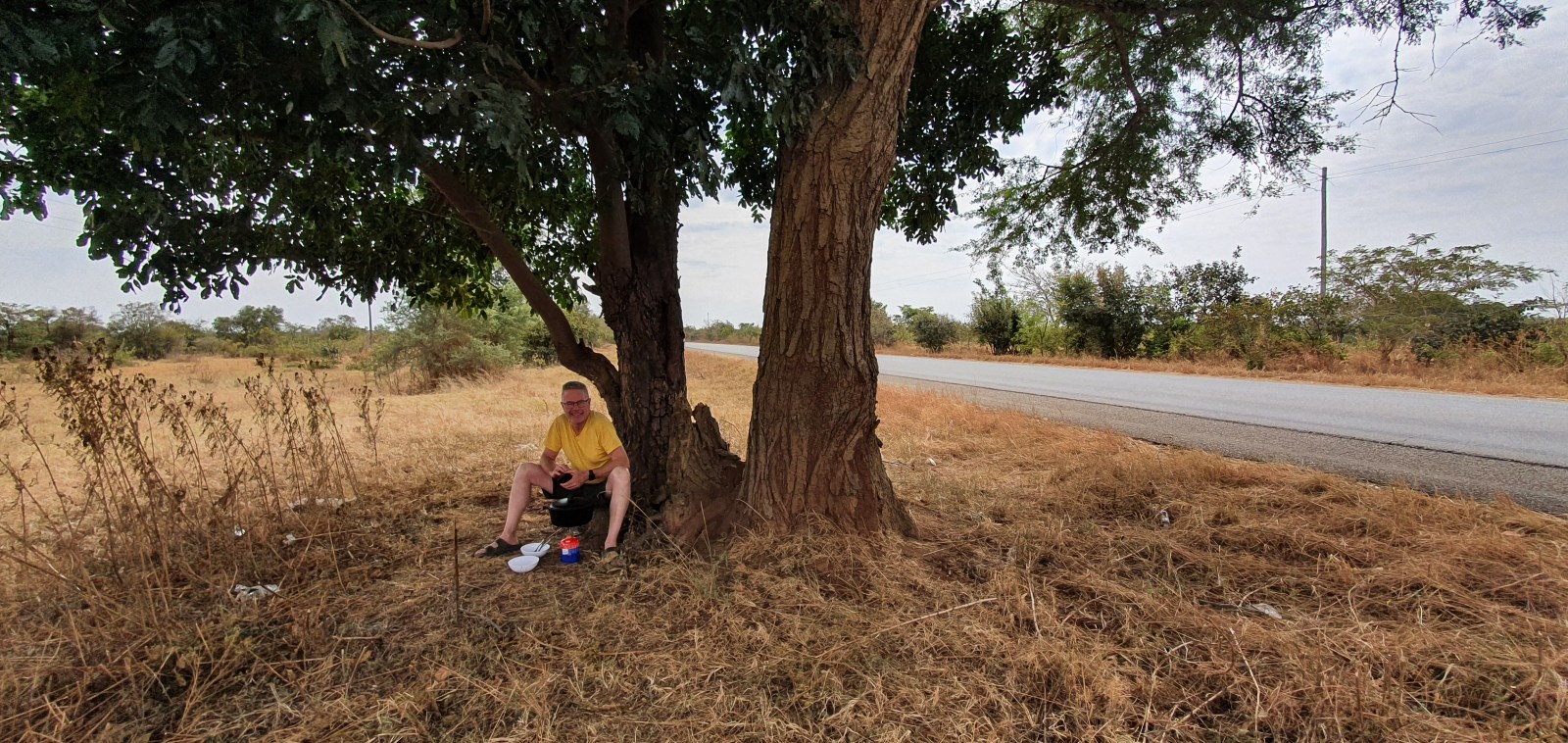
There were times on our road trip we had to pull over and heat up the leftovers, like Hugh Fraser here. (Photo: Bridget Hilton-Barber)
A revelation for me on this road trip was soya mince and how delicious it can be if you do it right. Another great revelation was how standards will slip.
She who used to turn up her nose at anything other than high-end sauv blanc found herself happily quaffing box wine on the shores of Lake Malawi. We also eventually stopped buying milk because even in the car fridge, the bumpy roads churned it to butter. Ice became a luxury in some parts.
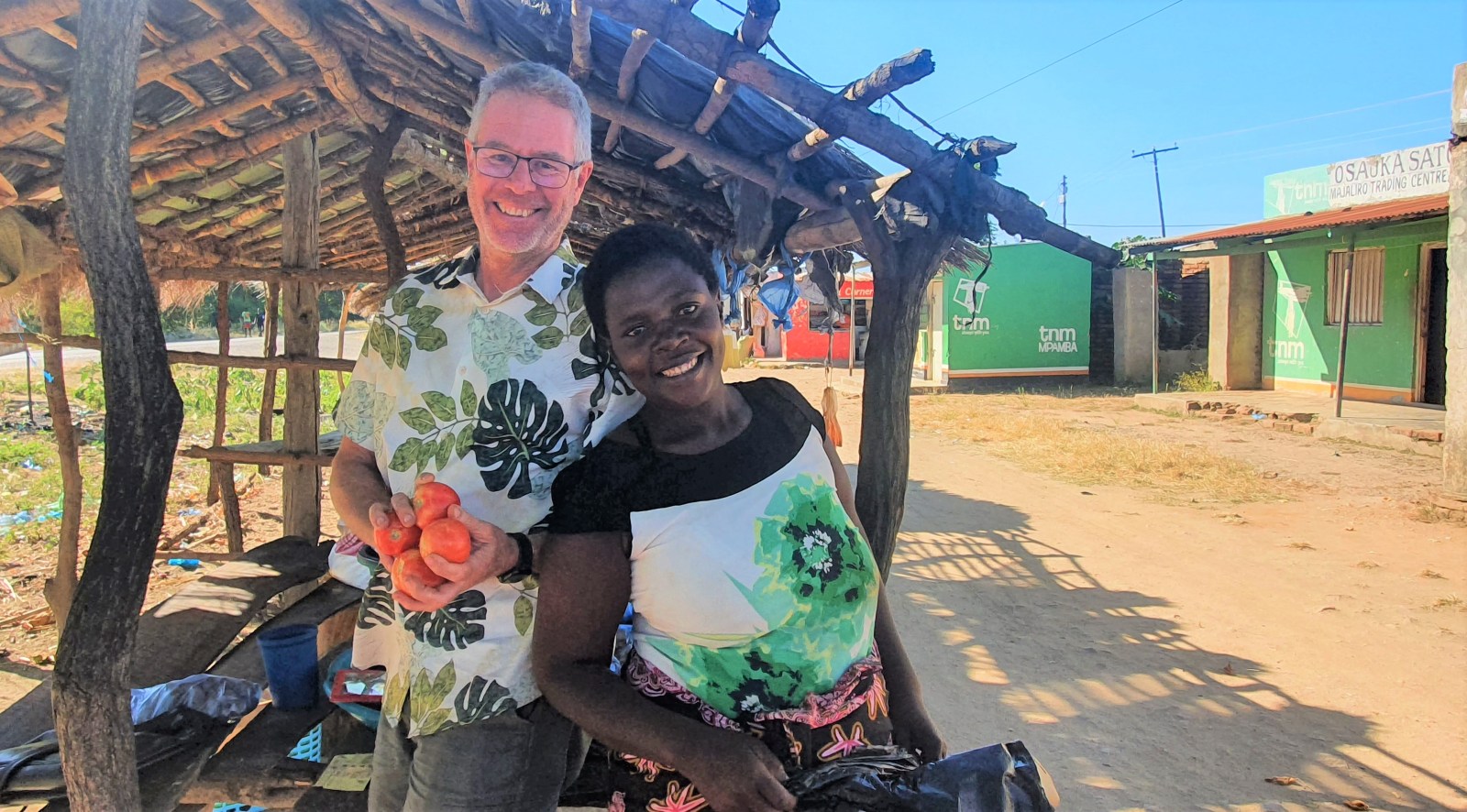
Hugh buying tomatoes at the roadside in Malawi. (Photo: Bridget Hilton-Barber)
Our best impromptu roadside meal was in Sitalike village in Tanzania. We’d driven the whole morning on dirt roads through Katavi National Park in which we saw nothing but a handful of zebras and the occasional kamikaze bus hurtling towards us at breakneck speed. We reached our destination and suddenly, urgently, needed a cold beer and a road trip carbo-load, local style.
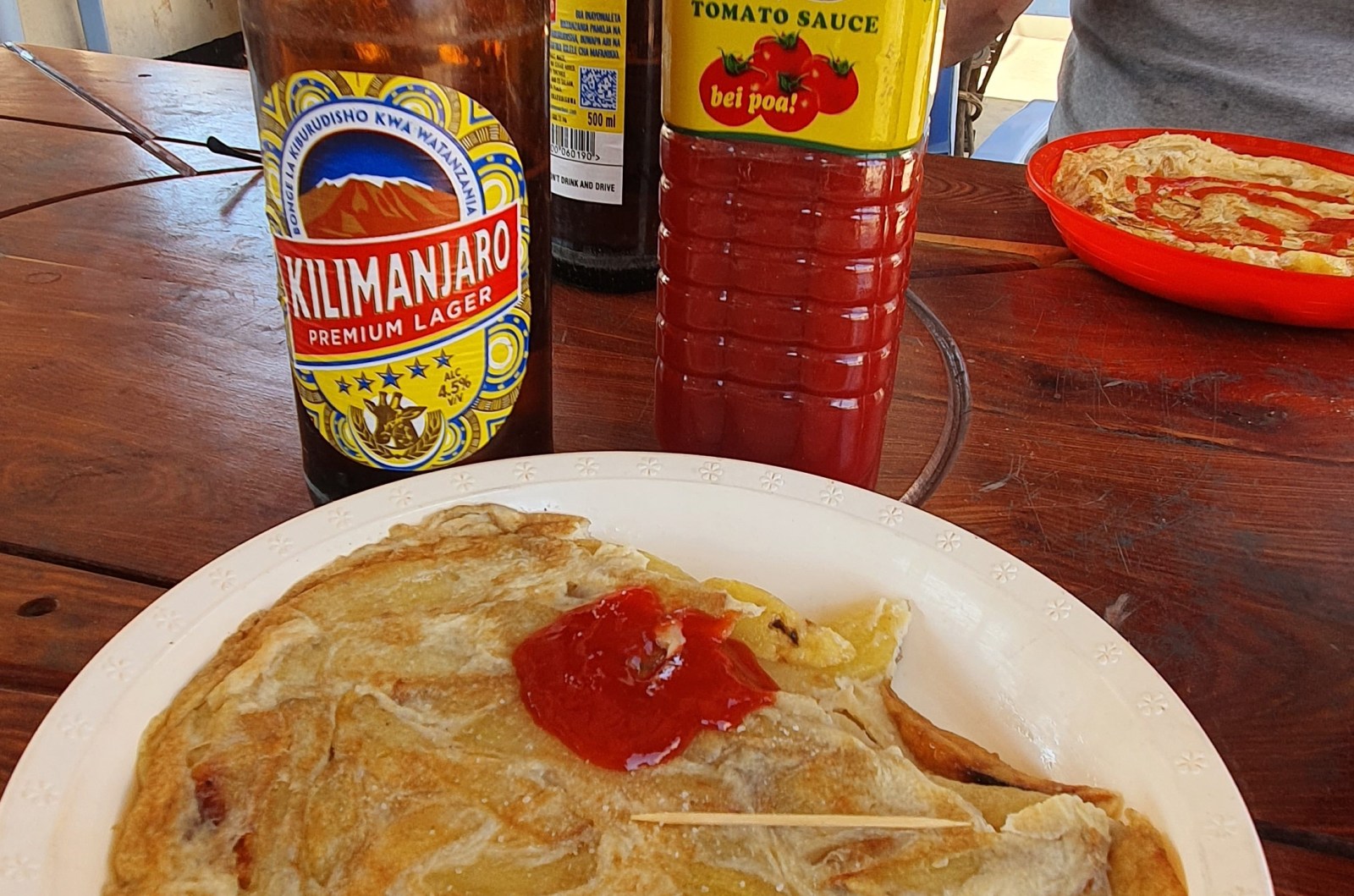
A much-loved Pan African meal is chipsi mayai, which is French fries in an omelette. (Photo: Bridget Hilton-Barber)
We sat under umbrellas at a street café with Kilimanjaro beer and ate Chipsi Mayai, a much-loved Pan-African dish. Chipsi is the Swahili word for French fries, or chips, and mayai means eggs in Swahili. It’s basically a really indulgent French fry omelette, freshly cooked on a small gas ring and served with a tomato sauce and a chilli sauce, both straight from the plastic bottle.
The Indian influence is strong across southern Africa, particularly in Tanzania, and the nicest Indian meal we had was at Aslaam Tandoori, a street café on a pavement in Mbeya, southern Tanzania. The chicken is marinated in a mix of garlic, cumin, ginger, coriander and garam masala, then rubbed with lemon and cooked over the coals right there.
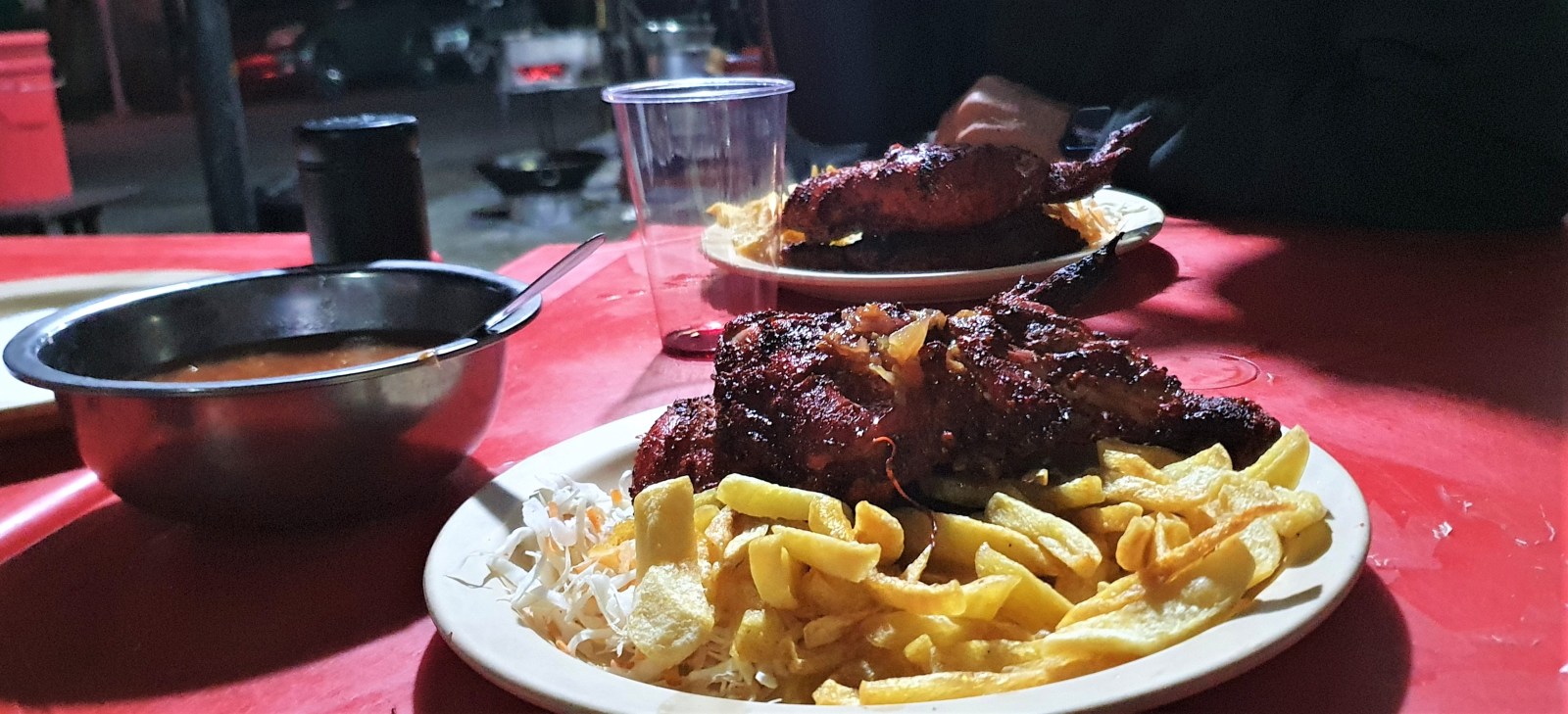
This fiery tandoori chicken was enjoyed at a street restaurant in Mbeya in Tanzania. (Photo: Bridget Hilton-Barber)
The bright fiery colour, the chef said, was from good quality Kashmiri red chilli powder, which gives an intense red colour but is mild on spice. We’d had an excruciating journey to Mbeya on dirt roads and had to replace two tyres. Then the road trip gods smiled upon us and we sat in the warm evening air drinking red wine and talking SADC politics.
The best worst meal with the best worst décor was the unbelievably scrawny chicken we had at the Gombe National Park chimp station in Tanzania, with chips and salad. We came in search of the chimps – and found them – and we stayed at the research station which was a basic spot where the meal was cooked outside under the tree. Hugh dubbed it the Carl Lewis chicken, all legs and tiny body, after the US field and track athlete.
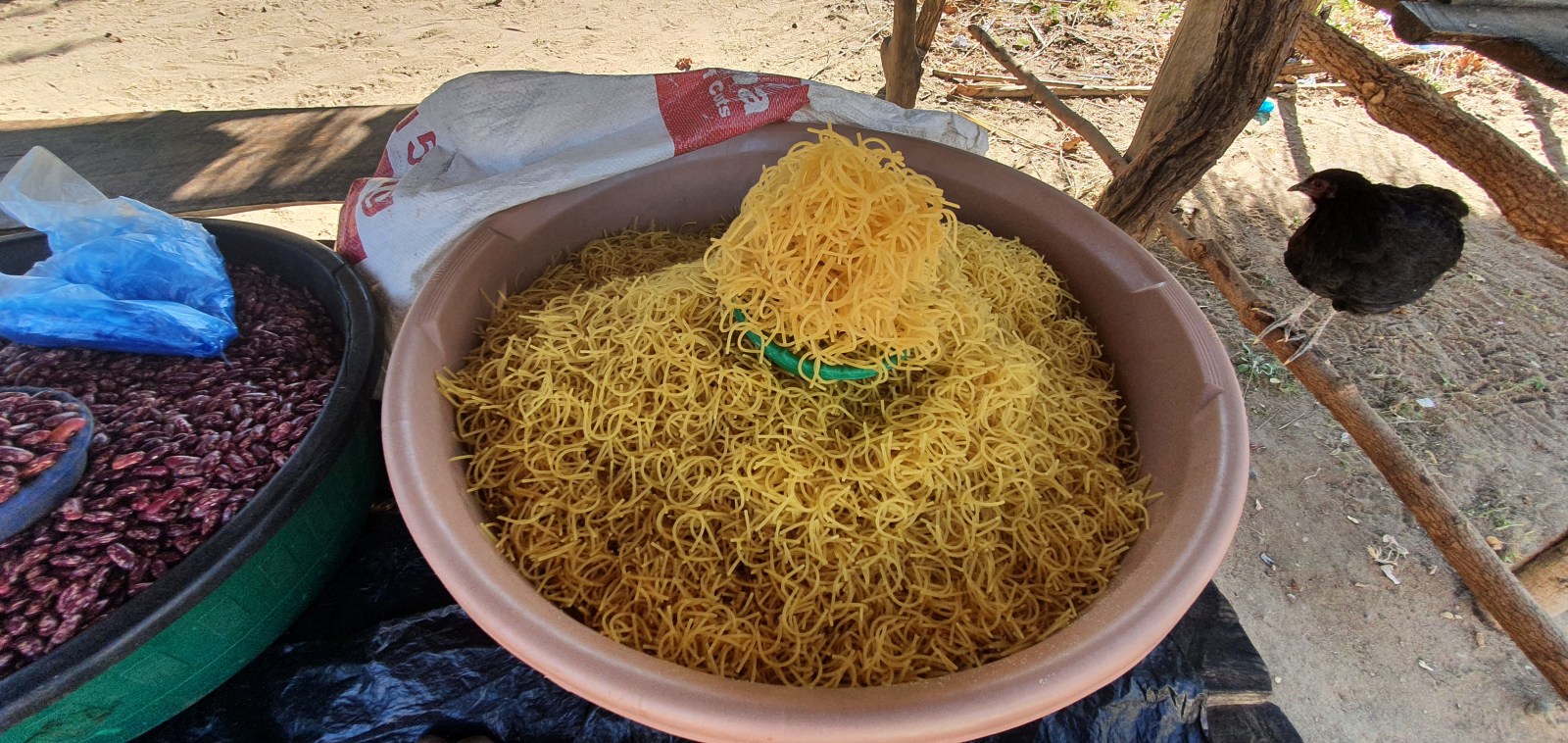
Street sellers in Malawi sell dry noodles; the chicken wasn’t for sale. (Photo: Bridget Hilton-Barber)
Tea and coffee were a joy throughout our entire trip. Tanganda Tea from Zimbabwe was my all-time favourite, and the Rwanda Strong Mountain Tea was also excellent. In both Burundi and Rwanda, African tea is a milk tea spiced with ginger and chai, an excellent breakfast tea.
The coffee in Rwanda was very good. Coffee is grown by nearly half a million small-scale farmers there, most of whom produce a bean called Bourbon, which is a respected Arabica variety.
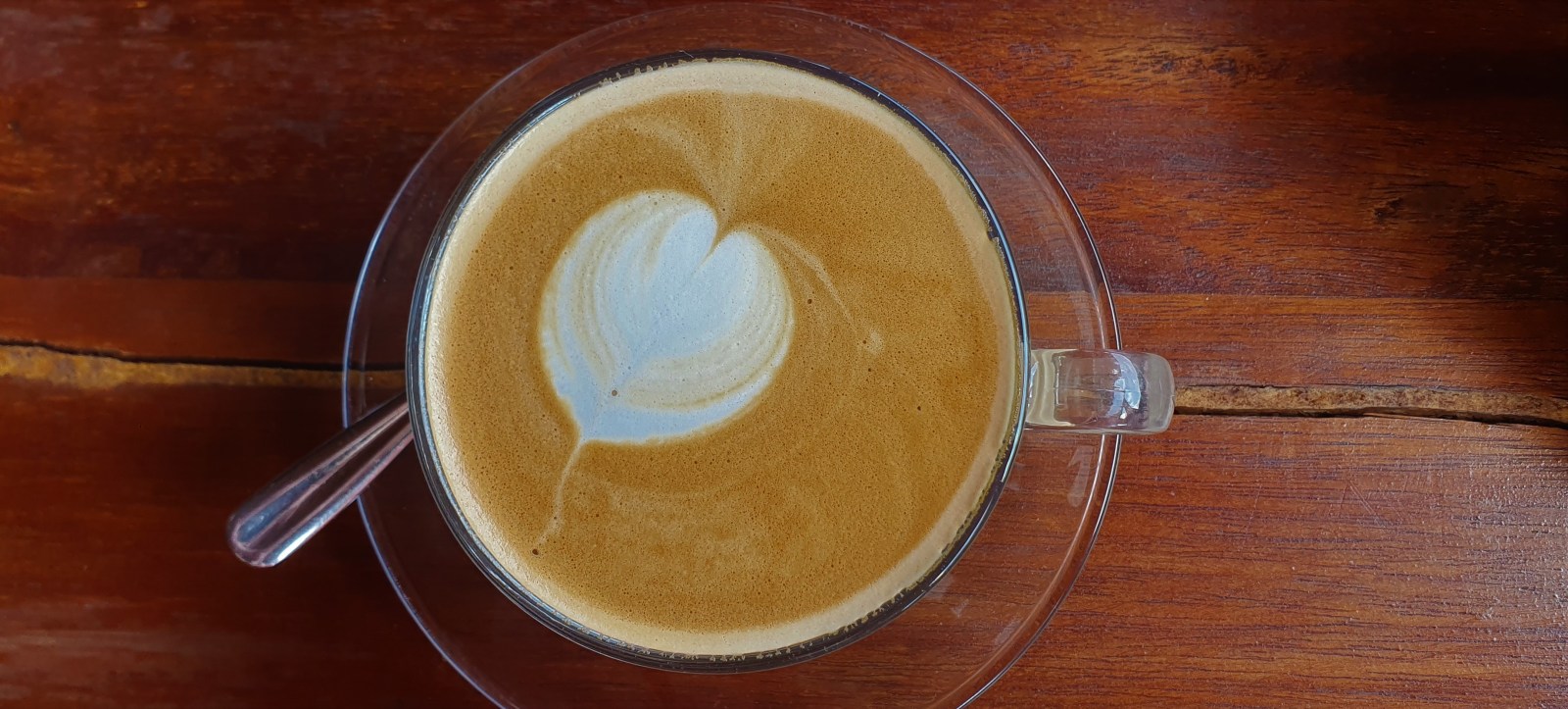
This Tanzanian Peaberry coffee is a rare African coffee varietal grown in southwestern Tanzania. (Photo: Bridget Hilton-Barber)
A delicious surprise was the Tanzanian Peaberry coffee, a rare African coffee varietal grown in the Mbeya region of southwestern Tanzania. These wonderfully smooth and full-bodied Tanzania Peaberry coffee beans are lightly roasted and rich in flavour, with a hint of dark fruits.
There are those who travel in hermetically sealed vehicles and mindsets, stopping only to eat and drink that which is familiar. We weren’t those people.
What a joy to be able to try a new flavour, tear into a local stew, or accept the offer of something we’d never tasted before.
As the late American chef Anthony Bourdain said: “Food is everything we are. It’s an extension of nationalist feeling, ethnic feeling, your personal history, your province, your region, your tribe, your grandma.”
And that’s worth the tasting. DM




Wonderful!
What a lovely read. Thank you
a lip licking lekker trek – thanks Bridget & Hugh! ps. needing a chipsi mayai now
I’ve been watching Itchy Boots, a YouTube Channel of a Dutch lady traversing West Africa by motorbike. What an eye-opener to the wonders of mostly rural Africa
Fascinating! Looking forward to more pics and stories of this epic trek.
What a fabulous read. Makes me want to get up and go. And explore. And have a food adventure.
“What a joy to be able to try a new flavour, tear into a local stew, or accept the offer of something we’d never tasted before.” Indeed.
Thanks for this piece and the great pics.
Such a great read….a trip we are dreaming of doing!